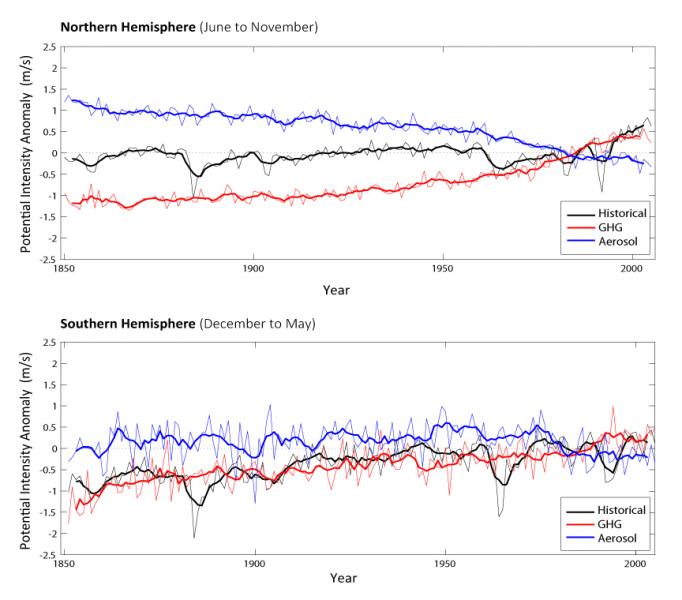[font face=Serif][font size=5]Tropical Cyclones on Track to Grow More Intense as Temperatures Rise[/font]
July 14, 2016
[font size=4]
Aerosols have Compensated for Greenhouse Gases, but Won't in the Future[/font]
[font size=3]Powerful tropical cyclones like the super typhoon that lashed Taiwan with 150-mile-per-hour winds last week and then flooded parts of China are expected to become even stronger as the planet warms. That trend hasn’t become evident yet, but it will, scientists say.
So far, the warming effects of greenhouse gases on tropical cyclones have been masked, in part by air pollution.
Over the past century, tiny airborne particles called aerosols, which cool the climate by absorbing and reflecting sunlight, largely cancelled out the effects of planet-warming greenhouse gas emissions when it came to tropical storm intensity, according to a new scientific review paper published this week in the
journal Science. That might sound like a good thing, but many of those particles came from the burning of fossil fuels and wood, and contributed to acid rain, smog and lung damage. As vehicles and power plants added filters and scrubbers to reduce their impact on human health, levels of man-made aerosols in the atmosphere began to decline. At the same time, greenhouse gas concentrations continued to rise.
That compensating effect won’t continue if greenhouse gas warming keeps increasing, the scientists write. Using model simulations, they provide new calculations of the cancelling effects of aerosols and greenhouse gases on tropical cyclones worldwide. They also take a closer look at the still-developing understanding of how climate change will affect tropical cyclones, also known regionally as typhoons or hurricanes.
…

[font size=1]The charts show potential intensity anomaly over time in the Northern and Southern Hemispheres using the CMIP5 computer model. The black line is historical potential intensity, blue is the influence of aerosols only, red is the influence of greenhouse gases only. Chart: Suzana Camargo[/font]
…[/font][/font]
